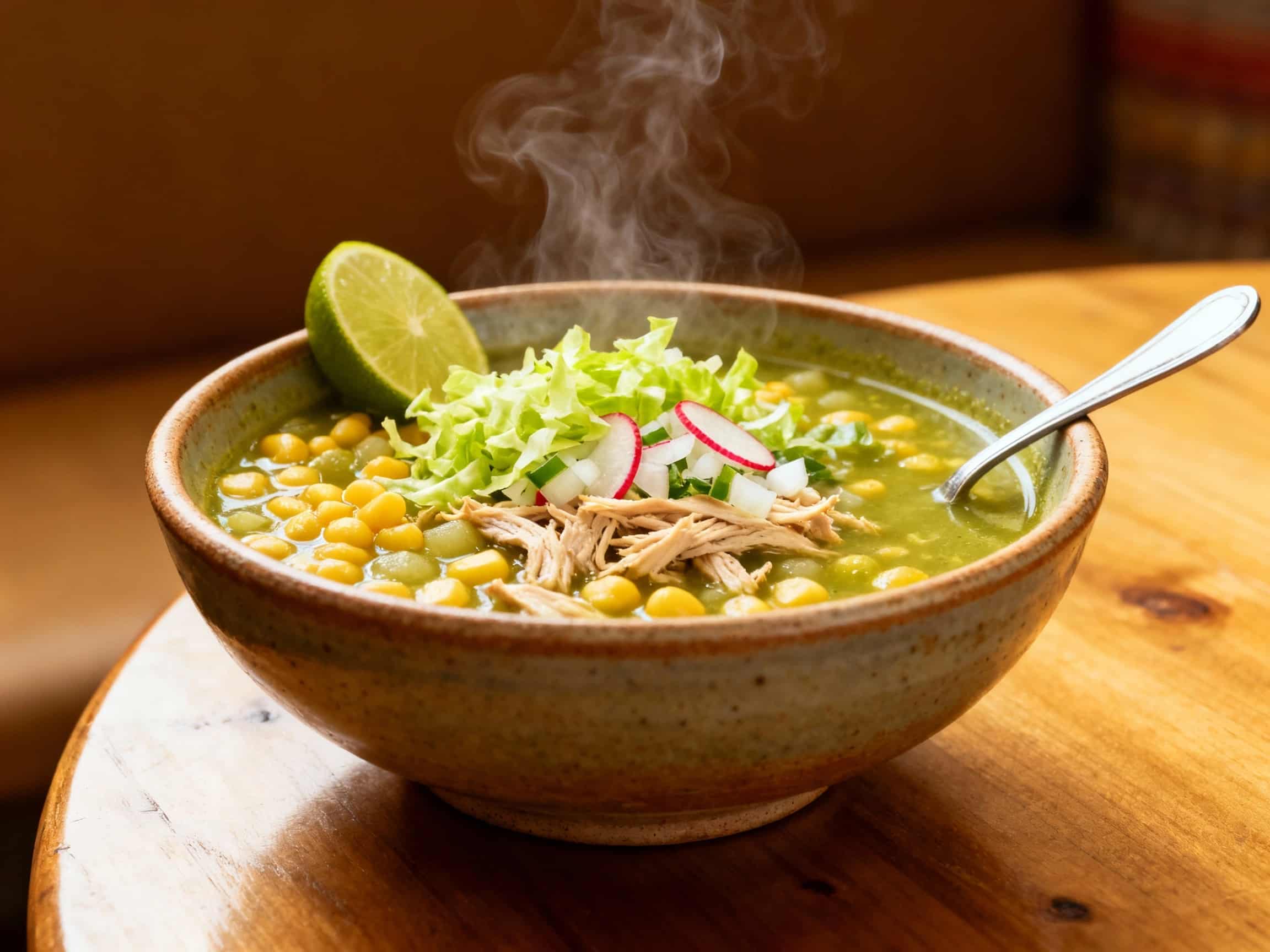
Pozole
Pozole
- Country
- Mexico
- Region
- Guerrero
- Recipes
- 2 Recipes
Dish information
Pozole, a hearty and ancient soup, is steeped in Mexican history and tradition, with roots tracing back to pre-Hispanic Mesoamerican cultures. The name 'pozole' comes from the Nahuatl word 'pozolli,' meaning 'hominy,' which is the dish's defining ingredient. Hominy, made from dried maize kernels treated with an alkali process called nixtamalization, becomes large and puffy when cooked, giving the soup its distinctive texture. Initially, during pre-Columbian times, pozole held significant ceremonial importance and was made with human flesh as part of ritual sacrifices, a practice that ended with the Spanish conquest. Following this, pork became the primary meat, though chicken and other proteins are also common today. The preparation of pozole is a meticulous process, often taking hours to cook the hominy and meat until tender. There are several regional variations: Pozole Blanco (white pozole) is the most basic, with clear broth; Pozole Rojo (red pozole), popular in Jalisco and Sinaloa, gets its color and heat from red chiles like guajillo and ancho; and Pozole Verde (green pozole), prominent in Guerrero, uses green chiles, tomatillos, epazote, and pumpkin seeds to create its characteristic hue and flavor. The unctuous broth is served piping hot, often accompanied by an array of garnishes that allow each diner to customize their bowl. These typically include shredded lettuce or cabbage, thinly sliced radishes, chopped onions, a squeeze of fresh lime juice, dried oregano, and chili flakes. For many Mexicans, pozole is more than just a meal; it's a dish associated with celebrations, holidays, and family gatherings, especially popular during Mexican Independence Day, Christmas, and New Year's Eve, embodying comfort, community, and the deep culinary heritage of the nation.
Timeline
Nixtamalization process for maize, central to hominy, is developed in Mesoamerica.
Spanish conquest leads to the replacement of human sacrifice in pozole with pork.
Pozole becomes a well-established dish in Mexican culinary tradition.
Pozole Rojo and Pozole Verde gain regional distinctiveness and popularity.

